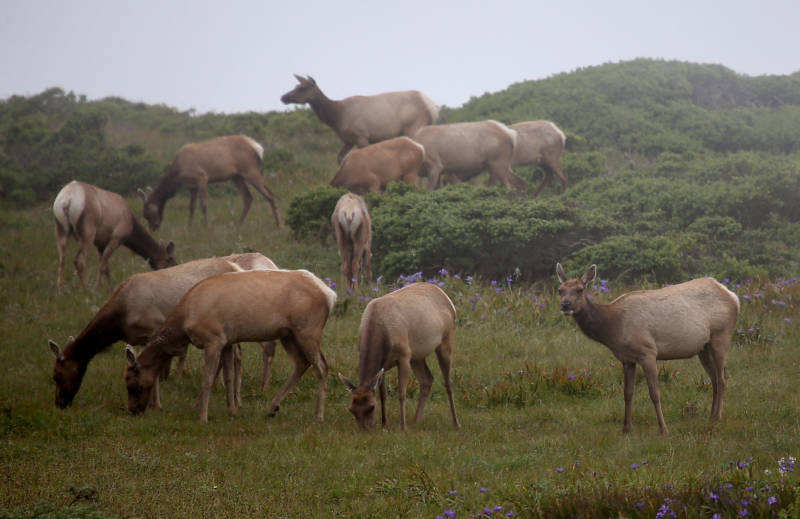About two dozen dairy and ranching families have leases on the national seashore and on the adjacent Golden Gate National Recreation Area. Agriculture takes up about a third of the park’s 44 square miles (114 square kilometers).
Some environmental groups want the park to prohibit beef and dairy operations in the park and were quick to criticize the plan.
“It’s appalling,” said Jeff Miller, senior conservation advocate at the Center for Biological Diversity.
“It’s an anti wildlife plan,” he said. “I’m having a hard time understanding what the Park Service is thinking. This plan calls for shooting and harassing elk in the only national park where they exist, and it does very little to address the significant environmental damage that’s occurring from the ranching.”
Park officials also want to allow some existing ranchers to raise pigs, goats, chickens and other livestock in a small area of the park, as well as grow row crops such as artichokes.
The Park Service drafted the plan and several alternatives to manage the land as part of a 2017 settlement after conservation groups sued the Park Service in 2016. The lawsuit alleged that the federal agency was violating the law by renewing ranching leases without considering the park’s preservation.
Park employees would likely kill a few elk at various times throughout the year, ensuring a proper ratio of male and female elk, Gunn said. The venison would be donated to charity.
The Park Service expects to have a final plan by early 2020, after a 45-day public comment period, Gunn said, and are hosting two public meetings about the plan.
The first meeting will be on August 27 between 5:00 and 7:00 p.m. at the West Marin School Gymnasium in Point Reyes Station. The second will be held the following day at the same time, but will be located at the Bay Model in Sausalito .
The Associated Press contributed to this report. Read their story here.

